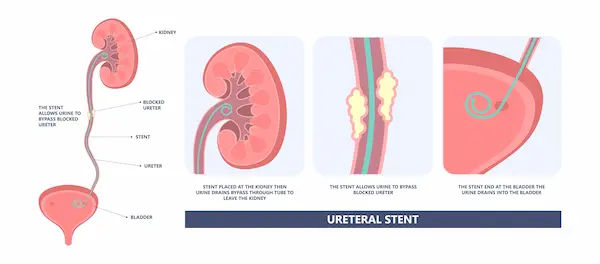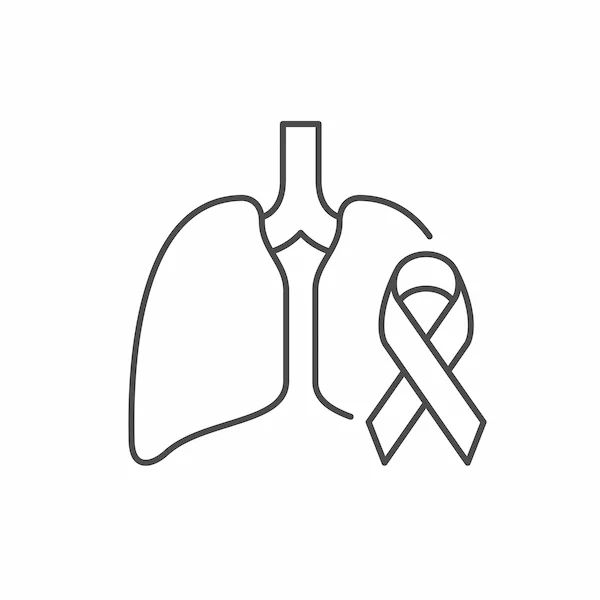What Leads To Signs Of Heat Stroke And Types
Know about heat stroke, signs, causes, types, symptoms, manifestations, who is at risk and more.


Introduction
Heat stroke is the most severe form of heat-related illness, a life-threatening condition that demands immediate medical attention. It occurs when your body's core temperature rises dramatically, exceeding 104°F (40°C), overwhelming its ability to cool itself down. Unlike heat exhaustion, its less severe precursor, heat stroke involves a breakdown of the central nervous system, leading to confusion, seizures, and even loss of consciousness. Understanding what leads to this dangerous state is crucial for prevention. This article will comprehensively guide you through the signs, root causes, and the two primary types of heat stroke: exertional and classic.
What Exactly is Heat Stroke? A Medical Emergency
Heat stroke is a state of hyperthermia (abnormally high body temperature) associated with a systemic inflammatory response and multi-organ dysfunction, particularly affecting the brain. It's not just about feeling hot; it's a complete failure of the body's thermoregulatory system.
Consult a General Practitioner for Personalised Advice
The Body's Cooling System: A Delicate Balance
Your body maintains a stable internal temperature primarily through sweating and redirecting blood flow to the skin. When you're hot, your blood vessels dilate (vasodilation) to carry heat to the surface, and sweat glands produce moisture that cools the skin as it evaporates. Heat stroke happens when this system is overwhelmed. High humidity impedes evaporation, making sweating ineffective. Dehydration reduces the body's ability to produce sweat. Together, these factors cause core temperature to skyrocket, essentially cooking the body's cells and organs from the inside.
Heat Stroke vs. Heat Exhaustion: Knowing the Critical Difference
This distinction is vital. Heat exhaustion is a serious condition, but it can often be resolved by moving to a cool place and hydrating. Its symptoms include heavy sweating, faintness, dizziness, and a rapid, weak pulse. The key differentiator for heat stroke is neurological changes. If the person becomes confused, agitated, slurs their speech, has a throbbing headache, or experiences seizures, it has progressed from exhaustion to stroke—a true medical emergency.
The Primary Causes: What Leads to Heat Stroke
Heat stroke doesn't happen spontaneously; it's a cascade of events triggered by specific factors.
Environmental Factors: High Heat and Humidity
The most obvious cause is exposure to a hot environment. Heat waves, particularly those with high humidity, are prime times for classic heat stroke. Humidity is a critical factor because when the air is saturated with moisture, sweat cannot evaporate, nullifying the body's primary cooling mechanism. This is a common scenario during summer heatwaves.
Physical Exertion: Pushing the Body Too Hard
Strenuous activity in hot weather generates immense internal heat. Athletes, military recruits, and outdoor labourers are at high risk. This exertional heat stroke can occur even in moderately warm conditions if the activity level is intense enough and the individual is not properly acclimatised or hydrated.
Underlying Health and Lifestyle Factors
Certain conditions and medications make individuals more susceptible. These include:
- Chronic illnesses: Heart disease, lung disease, kidney disease, and obesity.
- Medications: Diuretics, antihistamines, beta-blockers, and some antidepressants can impair the body's ability to regulate temperature and respond to heat.
- Age: The very young and the elderly have less efficient thermoregulatory systems.
- Sudden exposure: Travelling from a cool to a hot climate without giving the body time to acclimatise.
Recognising the Red Flags: Signs and Symptoms of Heat Stroke
Early recognition saves lives. The symptoms of heat stroke are severe and distinct.
Core Symptom: Extremely High Body Temperature
A core body temperature of 104°F (40°C) or higher, measured rectally, is the main sign of heat stroke. Note: Forehead or oral thermometers may be less accurate in these scenarios.
Neurological Symptoms: The Most Telling Signs
This is what separates it from heat exhaustion. Look for:
- Confusion, agitation, or irritability
- Slurred speech
- Delirium or hallucinations
- Seizures
- Coma or loss of consciousness
Other Physical Manifestations
- Altered sweating: In classic heat stroke, the skin may feel hot and dry. In exertional heat stroke, the skin may feel moistfrom vigorous exercise.
- Nausea and vomiting
- Flushed, red skin
- Rapid, shallow breathing
- Racing heart rate as the heart works overtime to cool the body.
The Two Distinct Types of Heat Stroke
While the outcome is similar, the pathways to heat stroke differ significantly, which is crucial for understanding
prevention.
Exertional Heat Stroke (EHS)
This type strikes suddenly, affecting otherwise healthy, active individuals who generate heat faster than their bodies can dissipate it during intense physical activity.
Who is at Risk?
It includes:
- Athletes (especially football players, runners)
- Military personnel in training
- Construction workers, firefighters, farmers
- Anyone unaccustomed to exercising in the heat
Common Scenarios and Prevention for EHS
EHS often occurs during the first few hot days of summer or at the start of a strenuous training camp. Prevention hinges on acclimatisation (gradually increasing activity in the heat over 1-2 weeks), mandatory hydration breaks, wearing lightweight clothing, and heeding early warning signs like muscle cramps.
Non-Exertional (Classic) Heat Stroke (NEHS)
This type develops over several days of exposure to a hot environment, typically affecting vulnerable populations who cannot regulate their temperature effectively.
Who is at Risk?
It includes:
- Elderly individuals, especially those living without air conditioning
- Infants and young children
- People with chronic illnesses (heart, lung, kidney)
- Those on certain medications (e.g., diuretics, anticholinergics)
Common Scenarios and Prevention for NEHS
NEHS is a major cause of death during prolonged heatwaves. Prevention involves checking on at-risk neighbours and relatives, ensuring access to air-conditioned spaces (even a few hours a day helps), drinking fluids regularly, and avoiding hot, enclosed spaces like cars.
Immediate First Aid: What to Do While Waiting for Help
If you suspect heat stroke, call emergency services immediately. Then, take rapid action to cool the person:
1. Move them to a shaded, cool area indoors.
2. Remove excess clothing.
3. Cool them with whatever means available:
* Immerse them in a cool tub or shower.
* Spray with a garden hose.
* Sponge with cool water.
* Apply ice packs or cold, wet towels to the neck, armpits, and groin.
* Fan them while misting with cool water.
4. Do not give them fluids to drink if they are confused or unconscious, as they may choke.
If symptoms of confusion or high fever are present, consult a doctor online immediately with Apollo24|7 for emergency guidance while you wait for help.
How to Prevent Heat Stroke Before It Starts
Prevention is always better than a cure. Key strategies include:
- Hydrate: Drink plenty of fluids throughout the day. Don't wait until you're thirsty.
- Schedule Smart: Limit outdoor activity to the cooler morning and evening hours.
- Acclimatise: Give your body time (7-14 days) to get used to the heat.
- Dress Appropriately: Wear lightweight, light-colored, loose-fitting clothing and a wide-brimmed hat.
- Use Sunscreen: Sunburn affects your body's ability to cool down.
- Never Leave Anyone in a Parked Car: This is a leading cause of pediatric heat stroke. The temperature inside a car can rise 20°F in just 10 minutes.
- Check on At-Risk Individuals: During a heatwave, regularly check on elderly neighbours and those with chronic illnesses.
Conclusion
Understanding the signs, causes, and distinct types of heat stroke empowers you to act decisively. Recognising that a confused state in the heat is a red flag can mean the difference between life and death. Whether you're an athlete pushing your limits or a caregiver for an elderly relative, the principles of prevention remain the same: respect the heat, prioritise hydration, and have a plan to stay cool. Heat-related illness is largely preventable. By staying informed and vigilant, especially during the summer months, you can ensure that fun in the sun doesn't turn into a medical crisis. If you have chronic health conditions that make you heat-sensitive, it’s wise to consult a doctor on Apollo24|7 to create a personalised heat-safety plan.
Consult a General Practitioner for Personalised Advice
Consult a General Practitioner for Personalised Advice

Dr. Mainak Baksi
General Practitioner
13 Years • MBBS , MD (MPH)
Howrah
Mainak Baksi Clinic, Howrah
(50+ Patients)

Dr. Shaik Abdul Kalam
General Practitioner
3 Years • MD (Physician)
Visakhapatnam
Apollo 24|7 Clinic - Andhra Pradesh, Visakhapatnam
(150+ Patients)

Dr D M Karthik
General Practitioner
4 Years • MBBS, Fellowship in Diabetes Mellitus, Advance certificate in Diabetes Mellitus, Derma Nutrition Certification
Visakhapatnam
Apollo 24|7 Clinic - Andhra Pradesh, Visakhapatnam

Dr. Rajib Ghose
General Physician/ Internal Medicine Specialist
25 Years • MBBS
East Midnapore
VIVEKANANDA SEBA SADAN, East Midnapore

Dr Suseela
General Physician
5 Years • MBBS
Bengaluru
Apollo Medical Center, Marathahalli, Bengaluru
Consult a General Practitioner for Personalised Advice

Dr. Mainak Baksi
General Practitioner
13 Years • MBBS , MD (MPH)
Howrah
Mainak Baksi Clinic, Howrah
(50+ Patients)

Dr. Shaik Abdul Kalam
General Practitioner
3 Years • MD (Physician)
Visakhapatnam
Apollo 24|7 Clinic - Andhra Pradesh, Visakhapatnam
(150+ Patients)

Dr D M Karthik
General Practitioner
4 Years • MBBS, Fellowship in Diabetes Mellitus, Advance certificate in Diabetes Mellitus, Derma Nutrition Certification
Visakhapatnam
Apollo 24|7 Clinic - Andhra Pradesh, Visakhapatnam

Dr. Rajib Ghose
General Physician/ Internal Medicine Specialist
25 Years • MBBS
East Midnapore
VIVEKANANDA SEBA SADAN, East Midnapore

Dr Suseela
General Physician
5 Years • MBBS
Bengaluru
Apollo Medical Center, Marathahalli, Bengaluru
More articles from General Medical Consultation
Frequently Asked Questions
1. Can you have heat stroke without a fever?
No. A significantly elevated core body temperature (hyperthermia) is the defining characteristic of heat stroke. However, the reading from a forehead strip thermometer may not be accurate. A rectal temperature is the gold standard for diagnosis.
2. How long does it take to recover from heat stroke?
Recovery time varies widely. Some may feel better within a day or two with proper medical care, while others may require a longer hospital stay. In severe cases, organ damage can lead to long-term health complications, and the body may remain sensitive to heat for up to a year.
3. What are the long-term effects of heat stroke?
Severe heat stroke can cause lasting damage to the brain, heart, kidneys, and muscles. This can result in problems with concentration and memory, increased susceptibility to future heat illness, and in rare cases, permanent disability.
4. Can heat stroke happen at night?
Yes, especially during a heatwave. If a person's body hasn't adequately cooled down from the day's heat and they are in a poorly ventilated, hot room (e.g., without air conditioning), their core temperature can remain dangerously high, leading to classic heat stroke.
5. Is it heat stroke if you are still sweating?
Yes. A common myth is that heat stroke always involves dry skin. While this is typical in classic heat stroke, individuals with exertional heat stroke are often still sweating profusely because the onset is so rapid during intense physical activity. The key diagnostic feature is the neurological impairment, not the presence or absence of sweat.




